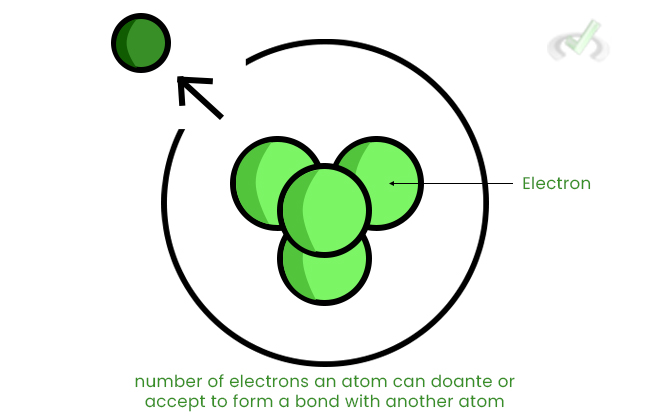Understanding the concepts of oxidation number and formal charge is essential in general chemistry. These concepts help predict how molecules interact and react. They also help us understand the behavior of atoms in molecules during chemical reactions.
I. Introduction to Oxidation Number and Formal Charge
Oxidation Number
An oxidation number (or oxidation state) represents the total number of electrons an atom gains or loses to form a chemical bond. It helps identify the electron density around an atom in a molecule. Knowing the oxidation number is important because it tells us about the atom's electron control in a molecule.

Formal Charge
The formal charge is the charge an atom would have if all the electrons in a covalent bond were shared equally between the bonded atoms. It helps to determine the most stable Lewis structure for a molecule. By knowing the formal charge, we can predict a molecule's most likely arrangement of atoms.
II. Calculating Oxidation Numbers and Formal Charges
To fully understand oxidation numbers and formal charges, it's important to know how to calculate them accurately. This section explains the rules and provides examples.
Oxidation Number Calculation Rules
- Elemental Form: The oxidation number of an atom in its elemental form is always 0. For example, O₂ or N₂.
- Monatomic Ions: The oxidation number is equal to the charge of the ion. For instance, Na⁺ has an oxidation number of +1.
- Oxygen: Usually has an oxidation number of -2, except in peroxides (like H₂O₂) where it is -1.
- Hydrogen: Generally has an oxidation number of +1 when bonded to non-metals and -1 when bonded to metals.
- Fluorine: Always has an oxidation number of -1 in its compounds.
- Sum Rule: The sum of oxidation numbers in a neutral molecule is 0; in an ion, it equals the ion's charge.
Example: Calculate the oxidation number of sulfur in H₂SO₄.
Hydrogen (H) = +1, so 2 H = +2
Oxygen (O) = -2, so 4 O = -8
Let sulfur be x:
The equation:
2(+1) + x + 4(-2) = 0
Solving:
2 + x - 8 = 0
x = +6
Formal Charge Calculation
Formal Charge = Valence electrons - ½ (Bonding electrons) — Non-bonding electrons
Example: Determine the formal charge of oxygen in H₂O.
Valence electrons of O = 6
Bonding electrons (2 bonds with H) = 4
Non-bonding electrons (2 lone pairs) = 4
Formal charge:
6-4/2-4 = 0
III. Importance of Oxidation Number and Formal Charge in Reactions
Understanding how oxidation numbers and formal charges work is crucial in predicting the outcome of chemical reactions. This section explores their roles in different types of reactions.
Oxidation Numbers in Redox Reactions: Oxidation numbers help identify which species are oxidized and reduced in redox reactions. Oxidation involves an increase in oxidation number, while reduction involves a decrease.Example: Consider the reaction:
2Mg (s) + O2 (g) → 2MgO (s)
- Mg goes from 0 (elemental) to +2 (MgO).
- O₂ goes from 0 (elemental) to -2 (MgO).
- Mg is oxidized, O₂ is reduced.
Formal Charges in Lewis Structures: Formal charges help determine molecules' most stable Lewis structure. This is crucial for predicting molecular geometry and reactivity.
Example: Compare possible Lewis structures for CO₂.
- Structure 1: O=C=O, where each O is 0 and C is 0.
- Structure 2: O≡C-O, where the left O is -1, C is +1, and the right O is 0.
- The first structure is more stable as the formal charges are minimized.
IV. Comparing Oxidation Number and Formal Charge
While oxidation numbers and formal charges serve different purposes, they often lead to similar conclusions about the electron distribution in molecules. However, oxidation numbers are used mainly in redox chemistry, while formal charges are used for drawing and evaluating Lewis structures.
Example: In sulfate ion (SO₄²⁻):
- The oxidation number of sulfur is +6.
- Formal charges: Each oxygen typically has a formal charge of -1, and sulfur has +2.
V. Practical Applications
Oxidation numbers and formal charges are not just theoretical concepts. They have practical applications in various fields of chemistry, and this section highlights some of these applications.
Oxidation Numbers in Industrial Chemistry: Used in processes like refining metals and manufacturing chemicals. For example, understanding oxidation states is essential for efficient conversion in the production of sulfuric acid.
Formal Charges in Organic Synthesis: Crucial for predicting organic compounds' most likely structures and reactivity. For example, minimizing formal charges in designing pharmaceuticals helps ensure stability and effectiveness.VI. Bridge/Overlap
Understanding oxidation numbers and formal charges is fundamental for grasping more complex topics in chemistry. These include:
A. Electron Configurations
Knowledge of how electrons are distributed in atoms and molecules helps predict oxidation states and formal charges.
B. Chemical Bonding
Understanding these concepts aids in learning about covalent, ionic, and metallic bonds, as well as molecular geometry.
C. Reaction Mechanisms
Helps in understanding how and why chemical reactions occur, which is essential for fields like biochemistry and pharmacology. For example, in nucleophilic substitution and electrophilic addition reactions.
VII. Wrap-Up and Key Terms
Oxidation numbers help us track electron transfer in reactions, which is key for redox processes. Formal charges help us determine the most stable structures of molecules. Both concepts are vital for understanding chemical reactivity and stability. They are essential tools for anyone studying or working in chemistry.
Key Terms
- Oxidation Number: Indicates electron loss or gain.
- Formal Charge: Indicates electron sharing in bonds.
- Redox Reactions: Involve changes in oxidation states.
- Lewis Structures: Help visualize molecular structure and stability.
VIII. Practice Questions
Sample Practice Question 1
What is the oxidation number of nitrogen in NO₃⁻?
A. +3
B. +4
C. +5
D. +6
Ans. C
The total oxidation state of the nitrate ion (NO₃⁻) must equal -1. Oxygen has an oxidation number of -2. With three oxygens, the total is -6. Nitrogen must have an oxidation number of +5 (-6 + 5 = -1) to balance this.
Sample Practice Question 2
Calculate the formal charge of chlorine in ClO₄⁻.
A. -1
B. 0
C. +1
D. +3
Ans. D
Chlorine has 7 valence electrons. In ClO₄⁻, it shares electrons with four oxygens (8 bonding electrons), and there are no lone pairs in chlorine. Formal charge: 7−8/2−0=+3.







 To help you achieve your goal MCAT score, we take turns hosting these
To help you achieve your goal MCAT score, we take turns hosting these 





















 reviews on TrustPilot
reviews on TrustPilot